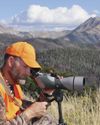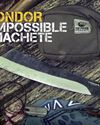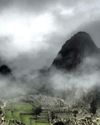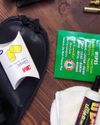Nuclear Fusion- Powered Sighting Systems.

On November 21, 1970, 56 American Special Operators assaulted the North Vietnamese POW camp at Son Tay some 23 miles west of Hanoi in Operation “Ivory Coast.” Their noble task was to extract and repatriate 65 American POWs held at the camp under utterly brutal conditions.
As was so typical of the Vietnam War in general, the mission was gallantly and flawlessly executed, yet it failed to free American POWs due to faulty intelligence. The POWs in question had been moved out of the camp some four months earlier due to flooding at the site.
While the Son Tay raid was prescient in its incorporation of a variety of tactics and techniques that have since become staples for modern special operations forces, one of the more remarkable aspects of the endeavor was the low-light weapon sighting systems.
Because the raid was conducted at night, the M79 grenade launchers had luminous tape applied to their sights to facilitate accurate employment under limited visibility. The most remarkable innovation, however, was the deployment of the Single point Occluded Eye Gunsight. Whereas nowadays, most everybody uses some sort of electronic red-dot sighting device, it all started with the Son Tay raid.
The Single point OEG was marketed by the Normark Corporation and sold commercially for about $50 a copy back in 1970. This equates to a bit north of $300 today. This relatively simple device incorporated a fiber-optic element arranged on a black background to provide a reddot aiming point that projected into an operator’s field of view.
This story is from the {{IssueName}} edition of {{MagazineName}}.
Start your 7-day Magzter GOLD free trial to access thousands of curated premium stories, and 9,000+ magazines and newspapers.
Already a subscriber ? Sign In
This story is from the {{IssueName}} edition of {{MagazineName}}.
Start your 7-day Magzter GOLD free trial to access thousands of curated premium stories, and 9,000+ magazines and newspapers.
Already a subscriber? Sign In

IT'S IN THE BAG
3 WAYS TO HANG A BEAR BAG

HOME DEFENSE
YOU DON'T NEED FANCY GEAR. RELY ON BASIC GUNS AND PROVEN DEFENSIVE MEASURES

GOT GAME?
5 REASONS YOU SHOULD ADD HUNTING TO YOUR SELF-RELIANCE PLAN

CONDOR IMPOSSIBLE MACHETE
THIS NOT-SOIMPOSSIBLE MAGHETE DELIVERS

CAN WE FIX IT? YES WE CAN
PUTTING TOGETHER AN EDC TOOL KIT THAT ACTUALLY WORKS

ON YOUR BEST BEHAVIOR
HOW TO AVOID CONFLICTS WITH LOCALS WHEN TRAVELING ABROAD

SPLURGE TOR SAVE?
A GUIDE TO WHICH CAMPING GEAR DESERVES YOUR HARD-EARNED CASH, AND WHICH GEAR TO SKIMP ON

HOLIDAY WISH LIST
LOOKING FOR GIFT IDEAS? WE HAVE YOU COVERED!

You Can Take It With You
Construct a support/ resupply kit that will keep you sharp and ready

City Survival
Nyerges "Urban survival guide" advocates living simply to be resilient against adversity